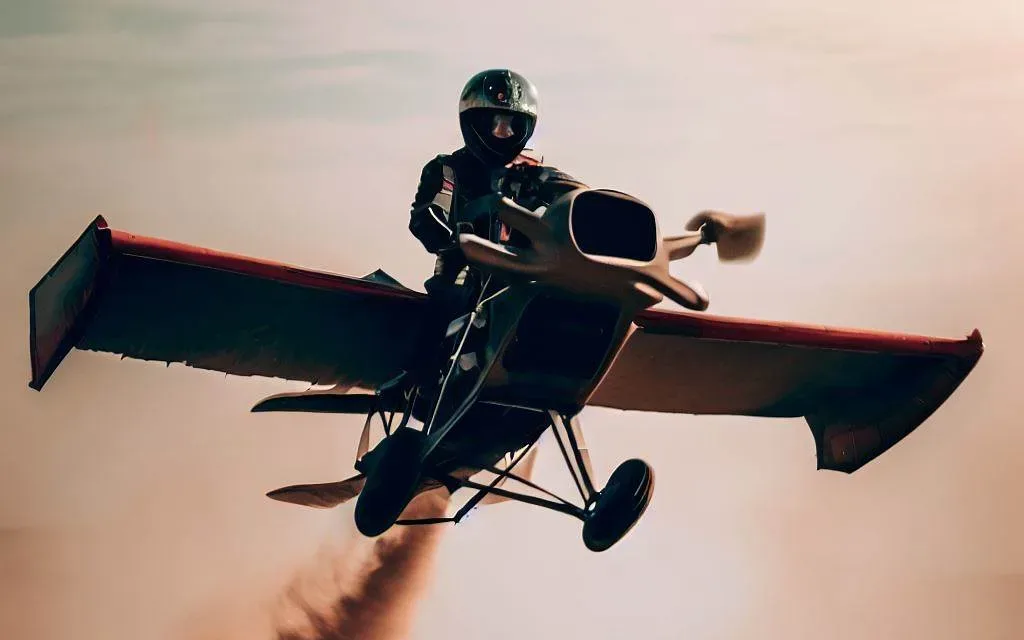Flying Race: Future of Motorsports: Welcome to the adrenaline-charged world of flying races, where cutting-edge technology and the human fascination with flight combine to create a spectacle like no other. Flying races have taken the world by storm, captivating audiences with their high-speed aerial action and showcasing the tremendous potential of electric aviation. In this article, we delve into the exhilarating world of flying races, exploring the leading racing series, the technological advancements that drive the sport, and the impact they have on the future of transportation. Get ready to soar to new heights as we unravel the thrilling realm of flying races.
Table of Contents
The Rise of Flying Races
Flying races have a rich and evolving history that dates back to the first ever flying car race held in 2022. This groundbreaking event marked a significant milestone, capturing the attention of enthusiasts, investors, and innovators who recognized the potential of this emerging field. Since then, flying races have continued to rise in popularity, captivating audiences with their unique blend of technology, skill, and spectacle.
Milestone moments have shaped the sport, from record-breaking speed runs to iconic aerial maneuvers. Each race and achievement has contributed to the growing legacy of flying races, inspiring new generations of racers and enthusiasts to push the boundaries further. The global impact of flying races has not gone unnoticed, as the sport continues to draw attention and pave the way for the future of motorsports.

The Leading Racing Series
The world of flying races is dominated by two leading racing series: the Airspeeder EXA Series and the eVTOL Grand Prix. Let’s explore each series and the exhilarating races they offer.
The Airspeeder EXA Series is at the forefront of flying car racing. It features electric manned multicopters that compete in a variety of thrilling racing categories, including circuit races, drag races, and time trials. These races push the limits of speed, precision, and maneuverability as pilots navigate through complex tracks and showcase their skills. The Airspeeder EXA vehicles are equipped with advanced electric propulsion systems, lightweight construction, and precise control systems, enabling them to perform incredible aerial maneuvers while ensuring safety.
The eVTOL Grand Prix takes racing to urban environments, showcasing the potential of electric vertical take-off and landing (eVTOL) vehicles. This series features a diverse range of eVTOL aircraft, including quadcopters, hexacopters, and octocopters. Pilots navigate through city centers, airports, and other urban landscapes, highlighting the agility and adaptability of eVTOL technology. The eVTOL Grand Prix emphasizes the challenges of racing in crowded spaces and the importance of safety measures and regulations. Tesla Enforcing Green Energy Usage – Megafactory scaling production of Megapck 2 XL
Technological Advancements in Flying Races
Flying races serve as a catalyst for technological advancements in the field of eVTOL vehicles. The intense competition and race-driven innovation push manufacturers and engineers to develop more efficient propulsion systems, improved energy storage solutions, and advanced flight control algorithms. As the pursuit of victory drives innovation, each technological breakthrough achieved in the quest for better race performance has the potential to impact the broader eVTOL industry. The evolution of eVTOL technology has brought forth advancements in aerodynamics, safety measures, and pilot training, paving the way for a safer and more efficient future of flying cars.
The Future Impact of Flying Races
The fascination with flying car technology goes beyond the thrill of racing. eVTOL vehicles have the potential to revolutionize transportation in urban environments. With vertical take-off and landing capabilities, they can bypass ground congestion and offer faster and more efficient mobility solutions. The environmental benefits of eVTOLs are also noteworthy, as they produce zero emissions at the point of use, contributing to improved air quality and reduced greenhouse gas emissions. Flying races showcase the possibilities of electric aviation, inspiring advancements in sustainable transportation.

Also Read: Harry Potter Flying Car: Flying Ford Anglia
Building a sustainable and safe future is crucial for the long-term viability of flying races. Safety measures, including rigorous pilot training programs and comprehensive risk assessments, ensure the well-being of participants and spectators. Regulatory frameworks and best practices provide guidelines for race organizers to navigate the challenges of racing in crowded spaces. Environmental considerations are also vital, and organizers can implement measures to minimize the carbon footprint of races through offsetting emissions, utilizing renewable energy sources, and adopting sustainable waste management practices. Furthermore, building public acceptance and mainstream appeal involves engaging with communities, raising awareness, and highlighting the positive aspects of the sport, such as technological advancements, economic opportunities, and job creation.
Conclusion
As flying races continue to captivate audiences and push the boundaries of technological innovation, it is clear that we are witnessing the dawn of a new era in motorsports. The fusion of cutting-edge technology, high-speed action, and sustainable transportation solutions positions flying races as a driving force in shaping the future of mobility. So, fasten your seatbelts and prepare for an electrifying journey as flying races redefine what it means to compete in the sky. Get ready to be amazed by the sheer excitement, speed, and innovation that await in the thrilling world of flying races.

